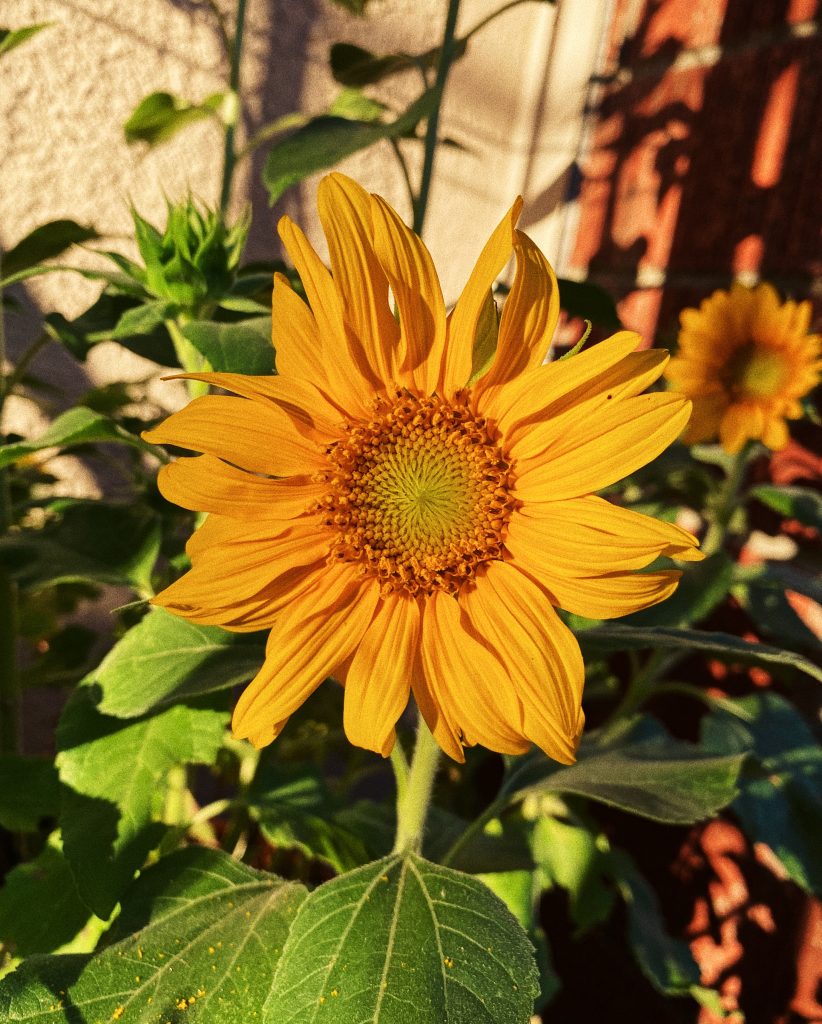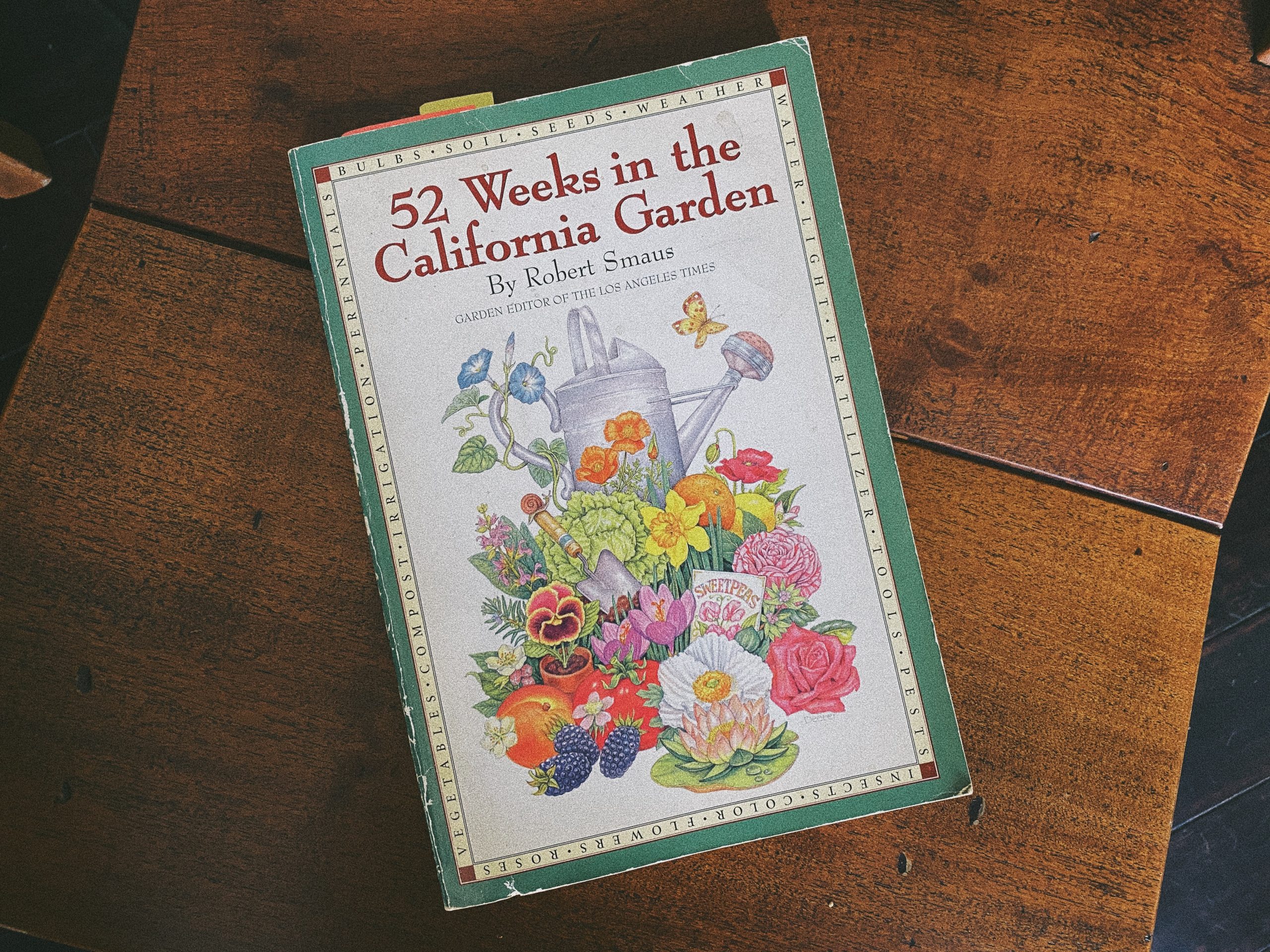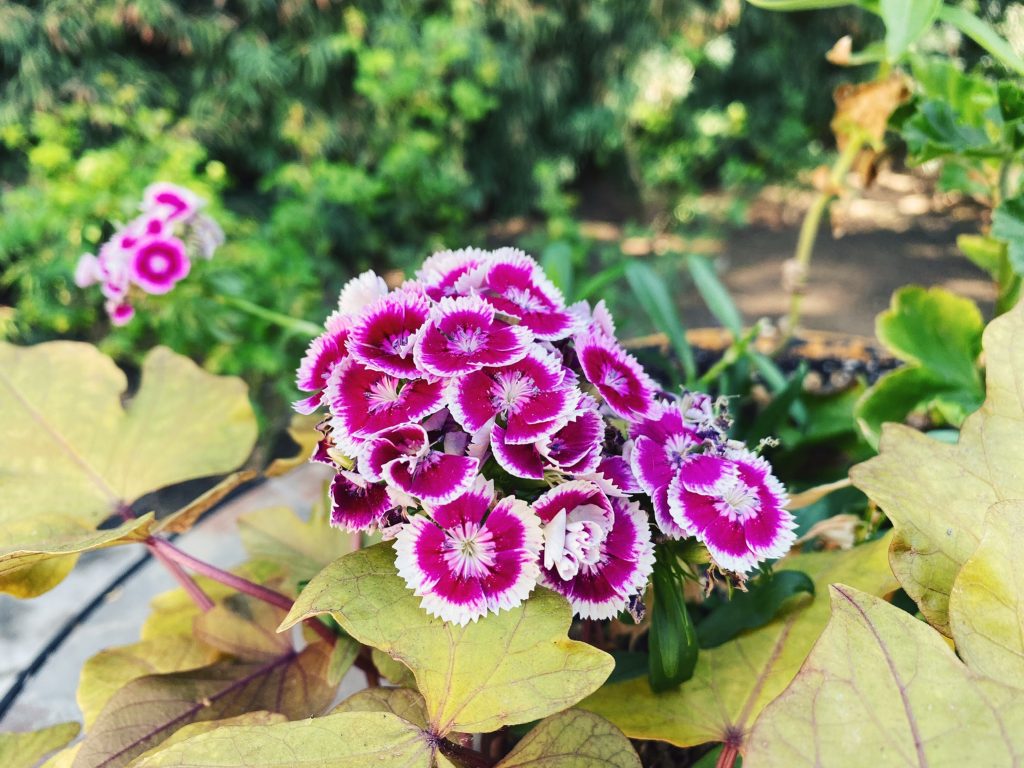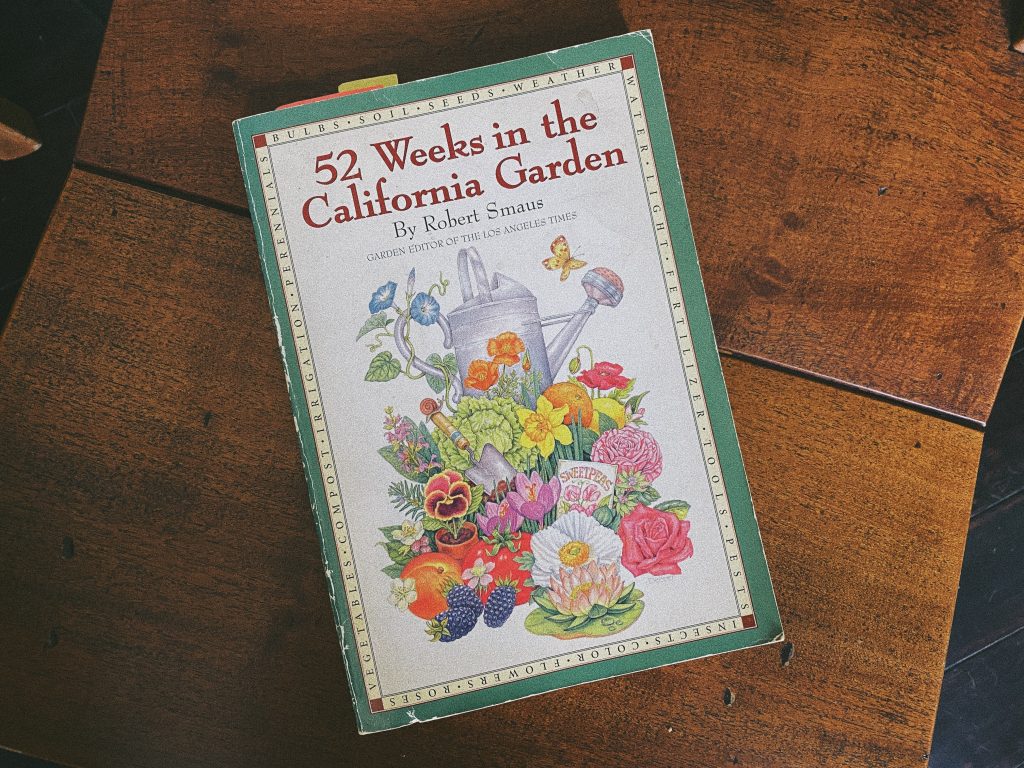Like most Southern Californians, I’ve spend the last week dealing with oppressive heat. We somehow always forget that as the light begins to tilt slightly and the days shorten, suddenly it becomes unbearably hot around here. And it can stay hot into October or November. A few years ago, I planted pretty pink hyacinth in the backyard hoping for a spring bloom. They now regularly begin to emerge in November, long before the spring and sit there awkwardly as the colder months approach. A few of the plants I started way back in June are in a sort of delayed adulthood. My sunflowers live in containers and are just now starting to bloom while also being endlessly thirsty.

A few watering hacks for fellow gardeners with thirsty plants:
Keep a bucket of water in the sink for when you rinse produce or your hands. The excess water is perfectly fine for watering plants outside. Plus, you pay for that water so you might as well get the most out of it.
I’ve used a product called SoilMoist for a few years now. It’s a polymer that expands when watered to provide an extra supply of water when needed. Although, in this heat I’m sure it’s much needed. It says it’s safe for vegetables, but I only used it for non-edibles.
Another hack I used are terracotta watering spikes. Terracotta is porous clay and once these spikes are inserted in the soil, you can invert a glass bottle filled with water (gently, please) and the water will slowly seep through the terracotta into the thirsty soil.
I’ve written on this before, but the book I recommend for all California green thumbs is 52 Weeks in the California Garden. This book changed how I approached all of my outdoor projects with the main planting season starting in September. Fall is our spring here and the most advantageous for good results year round. I should post more updates on my gardening projects in the future.
I get a little wistful writing about the end of summer, even with the extended blazing heat. For Labor Day, I drove once again to the desert house out on the Colorado River to spend time with my aunts, uncles, and baby cousins. Talk about heat. It was about 111 degrees on regular days, most of which we spent splashing around in the water and always with a cooler full of beer and soda water nearby.

I hardly had time to take pictures or anything like that because I was mostly on guncle duty to seven-year-old twins. Besides the aforementioned time playing in the water, activities included: word searches, activity book mazes, putting together a 500 -piece jigsaw puzzle (didn’t finish), and I got to introduce them to Mad Libs. Alas, that was the last family occasion of the summer, though I may be able to squeeze a few more trips in during the warm months. That’s the good thing about the desert house being so close…
…and by close, I mean about a four-hour drive from where I live. Tell that to any Angeleno and they’d probably fly into a tizzy. Palm Springs is about as far away as most LA people can stand. While the four-hour drive doesn’t really bother me, I do fill the time with either podcasts or audiobooks. My selections this time around:
”I’m Glad My Mom Died” by Janette McCurdy – listened to on the Libby app (free library books, y’all). The title is outrageous, but earned in this memoir on the author’s life as a child actor and Nickelodeon star, her fraught relationship with her mother, and dealing with eating disorders and alcohol abuse. I was already aged out Nickelodeon during the iCarly era, but like many I so wanted to be a teen TV star like her. Many years later, so many millennials are starting to come to terms with what this meant for the child stars themselves.
The podcast Weird Medieval Guys did a four-parter on the Hundred Years War. I’m not sure how I got started listening to this podcast, but I appreciated the deep dive into this. Like anything historical, it just makes you want to dive in even deeper, especially into the enigmatic life of Joan of Arc.
Onward to a very hot fall, and what is shaping to be a busy work season for me.






